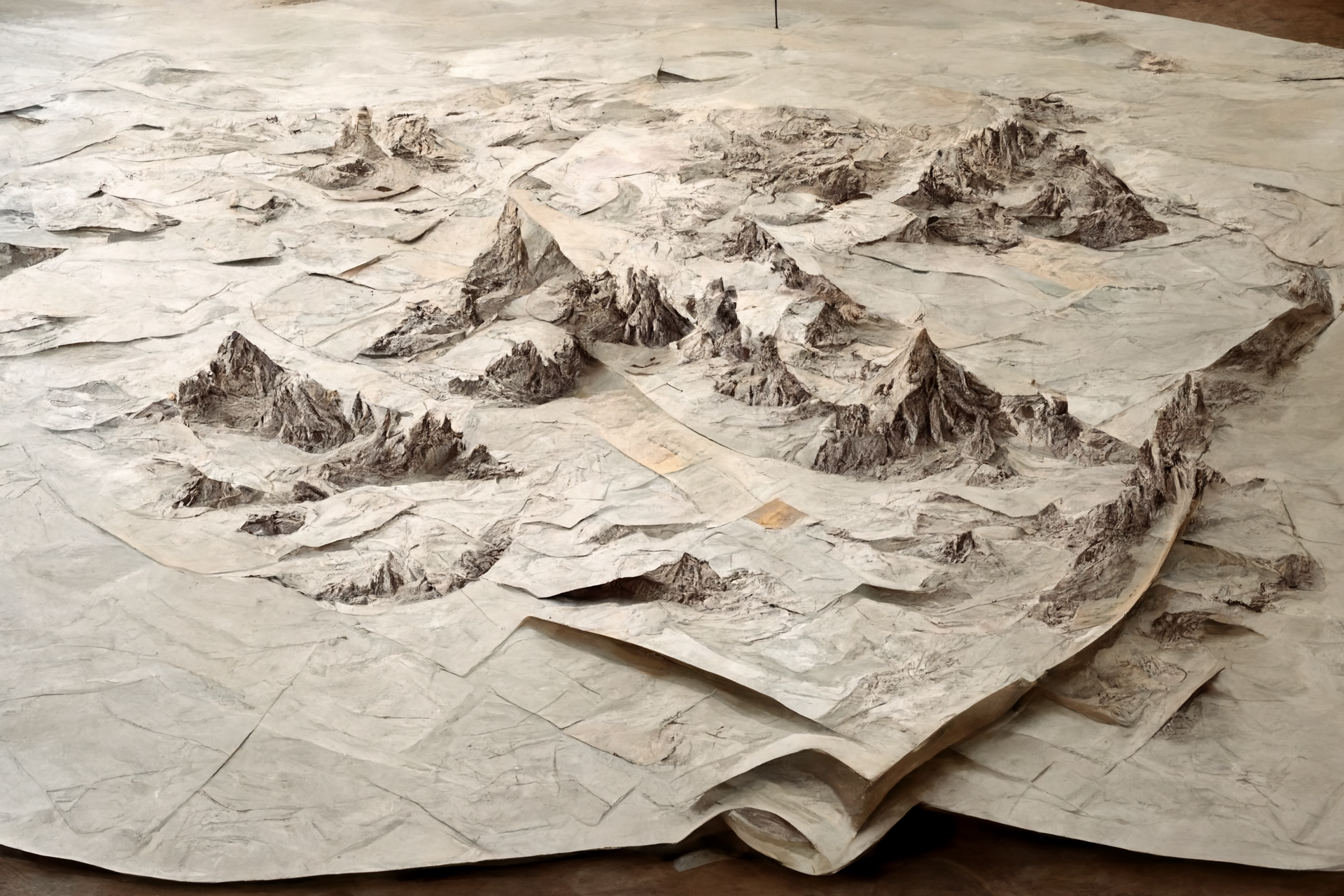During November, we explore four mental models related to transformation and change. By the end of this month, you will have strengthened your innovator’s toolkit with these new principles and ideas. Today we look at the map is not the territory.
Your Snapshot
A quick synthesis of this issue to share
💡 The map is not the territory is a mental model that reminds us not to confuse a model of a situation with the situation itself.
💡 There are two types of maps for understanding: internal (our narratives, schema and mental models) and external (the digital or physical artefacts we create to represent our plans and intentions).
💡 The problem is we lose touch with our reality; we must continually check our internal and external maps against the territory.
💡 The solution involves a shift in disposition to embrace fuzzier directions.

#291 | November 11, 2022 | Tom x Midjourney
Conceptual and Real Worlds
The map is not the territory is a mental model that can be applied to transformation and change in education. This model helps to illustrate that there is always a disconnect between the conceptual world (the map) and the real world (the territory or terrain).
The phrase reminds us not to confuse the diagram, model, or overview of the situation with the situation itself. Because they’re not the same. ~ Seth Godin
In other words, what we plan for and understand in our minds is never a replica of reality. This can be helpful when it comes to making changes, as it reminds us that things may not turn out exactly as we plan.
Effective collaboration and teamwork rely on shared understandings and aligned internal maps.
The map is not the territory also highlights the importance of remaining flexible and open-minded throughout the process of change.
Types of maps
We use two types of maps for understanding: internal and external.
Internal maps are what we see in our minds, narratives, schema and mental models. External maps are the digital or physical artefacts we create to represent our plans and intentions.
Both types of representation are flawed and imperfect, as Stephen Warrilow from Zen Tools explains
- They are reductions of what they represent.
- A map is a snapshot of a landscape [either topographical or situational] at a point in time.
- A map represents something that no longer exists.
As an overly enthusiastic ICT Coordinator, my first real experience with strategic design and planning was in the form of a development and improvement plan.
The external map was a printed record of the plan, which I suppose signalled order and structure. A lever arch folder was involved.
My internal map was this fantastical technology-rich adventure with the intent of improving access.
I always remember wondering who it was for and how quickly things became redundant or useless. Around this time, I wondered how you accomplished the much-heralded “it needs to be a living document”!
The rapid pace of change and technological advance meant I was continually asked if the plan was future-proof.
Not sure even my enthusiasm could solve that problem.

Oh, you have finished quickly!
One of the most memorable examples of the difference between my map and the territory comes from days spent training to be a teacher on placement in early years classrooms.
There is nothing like the feeling you get when you realise you have underplanned a lesson, and there is still the best part of 40 minutes still to go with 35 six-year-olds.
My map was the carefully prepared, beautifully presented lesson plan (external) and a thousand priorities I was holding in my head for teaching in the early years (internal).
The territory was the paint on my shoes and the sinking feeling seven minutes into the session.
Check, edit and align your maps
The problem is we lose touch with our reality.
- We need to continually check our internal and external maps against the territory. Assume our maps are going to be wrong and they need watchful maintenance.
- Update and edit your plans and intentions by listening to your peers, ask for clarification about how they see the situation. Explore what the evidence and data of your reality tells you.
- Seek alignment with your intentions, beliefs, how these are communicated with your team, and what the actual experience of change and development looks like.
The solution involves a shift in disposition to broader intentions and fuzzier directions.
⏭🎯 Your Next Steps
Commit to action and turn words into works
- Assume your plans are wrong; they are outdated and need maintenance.
- Check, edit and align your external maps with your internal beliefs.
- Responsive dialogue is probably more important than static documentation.
🗣💬 Your Talking Points
Lead a team dialogue with these provocations
- Describe a time when a project did not go to plan – how did you react?
- How important is our language as a signal of our internal maps?
- Why do we lose belief in a plan?
🕳🐇 Down the Rabbit Hole
Still curious? Explore some further readings
⟶ The map is not the territory [Seth Godin] “the words someone uses don’t accurately convey everything they’re feeling and thinking. They simply stake out some of that in a way that the speaker hopes will express the point they’re trying to make.”
⟶ Map And Territory – We Confuse The Map With The Territory [Zen Tools] “For everything we gain by being able to verbalize, articulate and record a topographical or situational landscape we lose an equal if not greater amount of the full meaning of that landscape by the very process of doing so.”
⟶ The map is not the territory [Tom McCallum] “Let’s take confidence as a theme I see often in clients. Once they start to believe they lack confidence, they tend to further embed that lack of confidence by using language that reinforces it, even if objective and measurable elements in their life and work (the reality, the “territory”) actually shows them to be much more confident in certain areas than they thought they were.
PS - By the way, I advocate for responsive teaching, learning and workshop design. We all need to make room for the stories and experiences of the humans we interact with. I plan for the unplanned.
